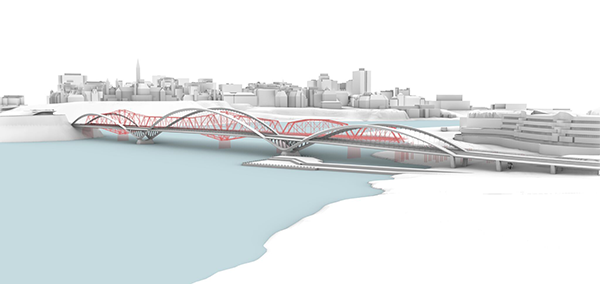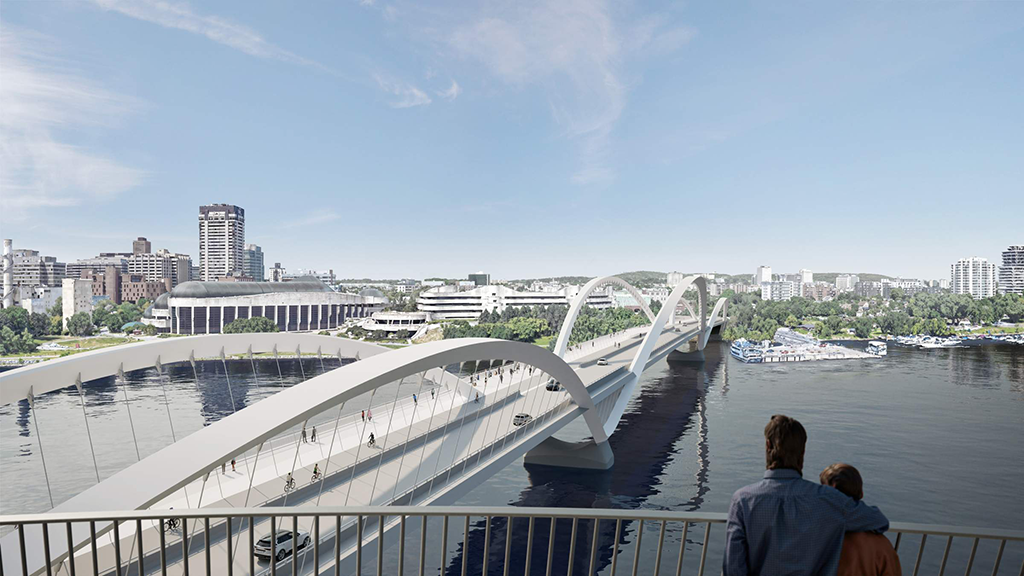OTTAWA — The National Capital Commission (NCC) Board of Directors is making waves, selecting “Motion’ as the preferred design concept for the replacement of the Alexandra Bridge, which spans the Ottawa River.
In early October, three shortlisted designs, Echo, Rendez vous and Motion, were presented to the board.
From there the NCC sought feedback on the design concepts from the public, Indigenous communities, focus and expert groups and stakeholders.
It all stems from May of 2023 when a team led by Arup Canada, with Knight Architects as lead bridge architect, established a design and architecture team to develop design concepts for the Alexandra Bridge replacement.
According to a release, Motion is inspired by the American eel and pays homage to the river’s ever-changing, dynamic movement. The design’s three defining rolling arches allude to the river’s flowing water, the contours of the shoreline and adjacent escarpment, and the curved façade of the Canadian Museum of History.

“It honours the efforts of Indigenous communities for the restoration of traditional habitats and their respected wisdom and dedication to reconciliation and reconnection to the land,” it reads.
“Motion stood out for its ability to complement the surrounding landscape, provide engaging views and offer accessible public spaces.”
It also achieved the highest score among the criteria.
The bridge option itself uses a different cross-section arrangement than the other two proposals, with a ladder deck system that features both the bike lane and vehicle lanes separated within the bridge structure and the pedestrian lane on the outer side.
The next steps include Public Services and Procurement Canada, the NCC and a technical adviser working together to “refine the preferred design concept.”
The next round of public consultation on the bridge’s reference design is scheduled for this year.
The project is using a progressive design-build model, which is a collaborative approach that will enable the architecture, engineering and construction team to work with the integrated project team.
The replacement work should begin in 2028, and the new bridge is expected to be operational in 2032.
The current Alexandra Bridge is 120 years old, is reaching the end of its useful life and needs to be replaced. The main cause of deterioration is long-term exposure to the elements and salt from winter de-icing and splashing from vehicles. In spite of mitigation efforts and various investments over the years to slow down the structure’s deterioration, corrosion has set in and is spreading quickly.




Recent Comments